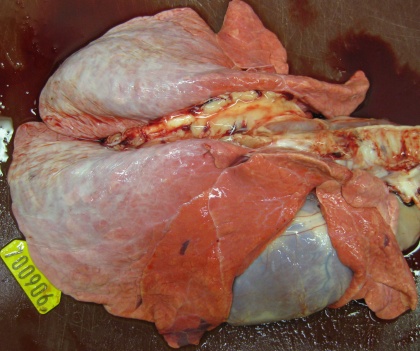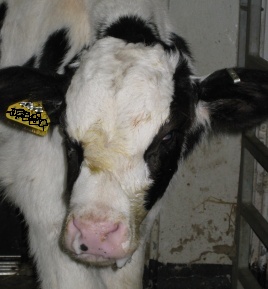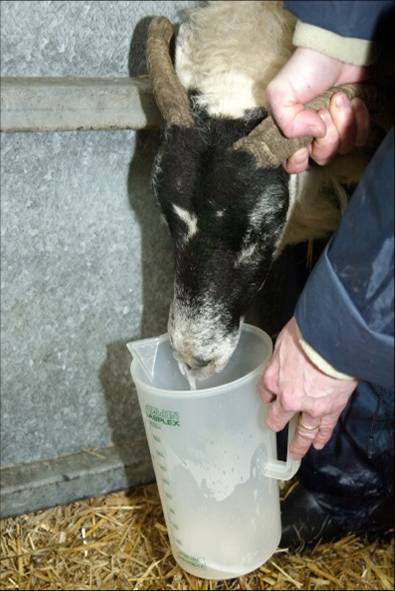Respiratory Diseases in Livestock
Published on 29 September 2009 in Food, health and wellbeing
Introduction
Respiratory disease in sheep and cattle causes major welfare and economic problems for Scottish farms despite the widespread use of vaccines and antibiotics. Estimates of the financial cost run into millions of pounds per year, due to a combination of production losses, deaths, and veterinary bills.
Key Points
Infectious respiratory disease is a major welfare and economic problem on many farms. Carrier animals that may show no sign of disease, but are able to infect others, are difficult to identify and treat. Even with modern drugs, bacteria and viruses in the upper respiratory tract are difficult to remove, making sick animals difficult to cure and susceptible to secondary infections. There are vaccines against some respiratory diseases (e.g. infectious bovine rhinotracteitis [IBR], bovine respiratory syncytial virus [BRSV], bovine parainfluenza virus 3 [PI3] and pneumonic pasteurellosis caused by Mannheimia haemolytica), but not all; for example, Pasteurella multocida is now a major cause of cattle pneumonia. Livestock losses and welfare problems persist and we need a better understanding of the disease processes, the interactions between pathogens and how infectious diseases are carried over from year to year in order to develop better diagnostic tests and control measures.


Research Undertaken
A recent Moredun on-farm survey of Scottish beef and dairy cattle found that 17% calves up to 8wk old had nasal infection with P. multocida, although most appeared healthy at the time of sampling. It was common for P. multocida to be associated with the detection of Mycoplasma spp. and bovine PI3 virus. Trials under standard farm conditions at Moredun with 40 newborn calves from 18 farms found that 10 were positive for P. multocida infection on arrival and that, by day 17, 29 naïve calves had become infected and many either treated with antibiotic or killed humanely to prevent suffering. Infection caused lung damage quickly (Fig), resulting in fever, breathing difficulties and dullness and spread easily and quickly from animal to animal, possibly via nasal secretions.


Policy Implications
Control of common endemic diseases, is important in increasing productivity and food security for Scotland. Reducing disease losses also increases efficiency and reduces the environmental impact of farming, whilst supporting the rural economy. Respiratory diseases have a large impact on farms and are a key target for improved control.
Author
Dr Chris Hodgson chris.hodgson@moredun.ac.uk







